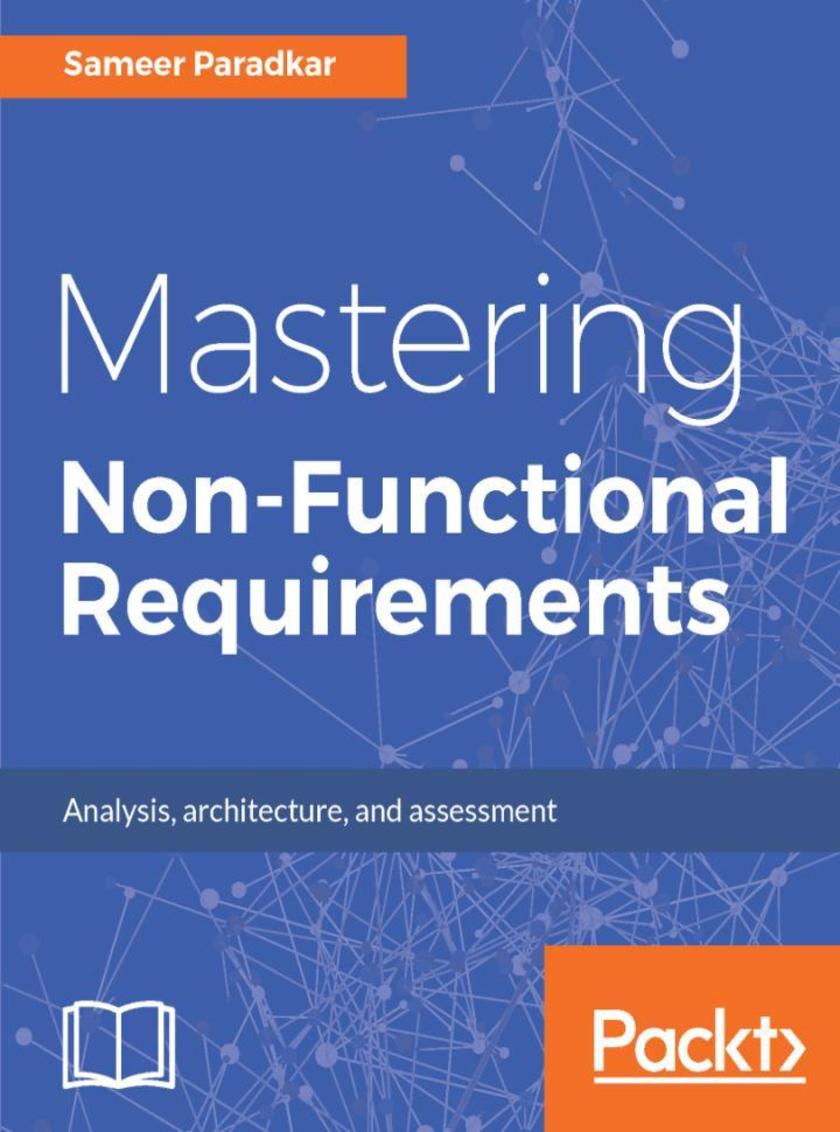
Mastering Non-Functional Requirements
¥71.93
This book covers the most critical 24 NFRs that are applicable to IT applications and systems. About This Book ? Explains three stages of nonfunctional requirements, that is, analysis, architecture, and assessment ? In-depth knowledge of NFR framework and taxonomy that provides guidance around the modelling phase for the NFRs ? Coverage of 24 critical and pivotal NFRs, including the analysis, architecture, and assessment. Who This Book Is For The primary audience for this title are the gamut of roles starting from IT consultant to chief architects who are responsible to deliver strategic, tactical, and operational engagements for fortune 100 customers worldwide. Nonfunctional requirements are the key to any software / IT program. They cannot be overlooked or ignored. The book provides a comprehensive approach from analysis, architecture, and measurement of nonfunctional requirements. The book includes considerations for bespoke (Java, .Net, and COTS applications). These are applicable to IT applications from various domains. The book outlines the methodology for capturing the NFRs and also describes a framework that can be leveraged by analysts and architects for tackling NFRs for various engagements. The audience for this book include business analysts, enterprise architects, business architects, solution architects, technical architects/designers, domain/security/integration architects, software developers, support engineers and test engineers, technical project managers, project leads/technical leads/technical project managers, and students from the computer science/IT stream What You Will Learn ? Learn techniques related to the analysis, architecture, and monitoring of NFRs ? Understand the various tools, techniques, and processes in order to improve the overall quality of the desired outcomes ? Embrace the best practices of architecting, metrics, and success factors for NFRs ? Identify the common pitfalls to be avoided and the patterns to leverage ? Understand taxonomy and framework for NFRs ? Learn the design guidelines for architecting applications and systems relating to NFRs ? Abstract different methodologies to analyze and gather NFRs In Detail Non-functional Requirements are key to any software/IT program and cannot be overlooked or ignored. This book provides a comprehensive approach to the analysis, architecture, and measurement of NFRs. It includes considerations for bespoke Java, .NET, and COTS applications that are applicable to IT applications/systems in different domains. The book outlines the methodology for capturing the NFRs and also describes a framework that can be leveraged by analysts and architects for tackling NFRs for various engagements. This book starts off by explaining the various KPIs, taxonomies, and methods for identifying NFRs. Learn the design guidelines for architecting applications and systems relating to NFRs and design principles to achieve the desired outcome. We will then move on to various key tiers/layers and patterns pertaining to the business, database, and integrating tiers. After this, we will dive deep into the topics pertaining to techniques related to monitoring and measurement of NFRs, such as sizing, analytical modeling, and quality assurance. Lastly, we end the book by describing some pivotal NFRs and checklists for the software quality attributes related to the business, application, data, and infrastructure domains. Style and approach The book takes a pragmatic approach, describing various techniques related to the analysis of NFRs, the architecture of NFRs, and assessment of NFRs.
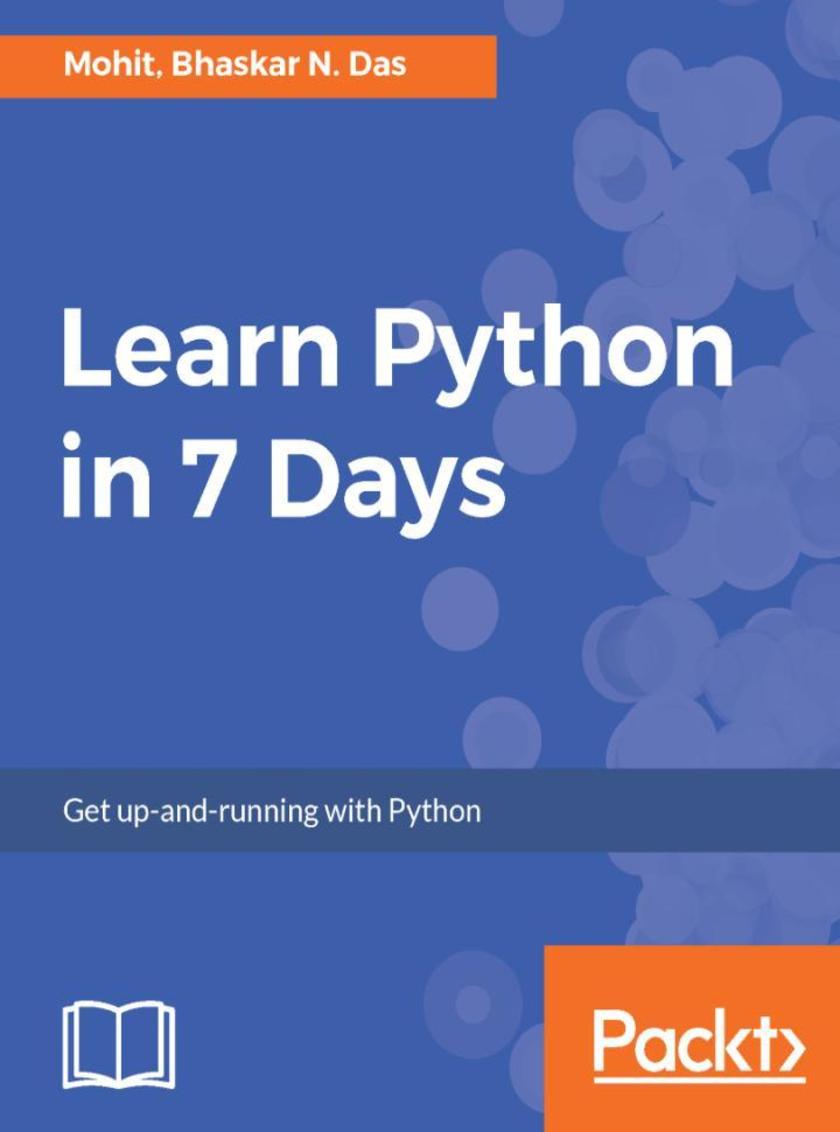
Learn Python in 7 Days
¥71.93
Learn efficient Python coding within 7 days About This Book ? Make the best of Python features ? Learn the tinge of Python in 7 days ? Learn complex concepts using the most simple examples Who This Book Is For The book is aimed at aspiring developers and absolute novice who want to get started with the world of programming. We assume no knowledge of Python for this book. What You Will Learn ? Use if else statement with loops and how to break, skip the loop ? Get acquainted with python types and its operators ? Create modules and packages ? Learn slicing, indexing and string methods ? Explore advanced concepts like collections, class and objects ? Learn dictionary operation and methods ? Discover the scope and function of variables with arguments and return value In Detail Python is a great language to get started in the world of programming and application development. This book will help you to take your skills to the next level having a good knowledge of the fundamentals of Python. We begin with the absolute foundation, covering the basic syntax, type variables and operators. We'll then move on to concepts like statements, arrays, operators, string processing and I/O handling. You’ll be able to learn how to operate tuples and understand the functions and methods of lists. We’ll help you develop a deep understanding of list and tuples and learn python dictionary. As you progress through the book, you’ll learn about function parameters and how to use control statements with the loop. You’ll further learn how to create modules and packages, storing of data as well as handling errors. We later dive into advanced level concepts such as Python collections and how to use class, methods, objects in python. By the end of this book, you will be able to take your skills to the next level having a good knowledge of the fundamentals of Python. Style and approach Fast paced guide to get you up-to-speed with the language. Every chapter is followed by an exercise that focuses on building something with the language. The codes of the exercises can be found on the Packt website
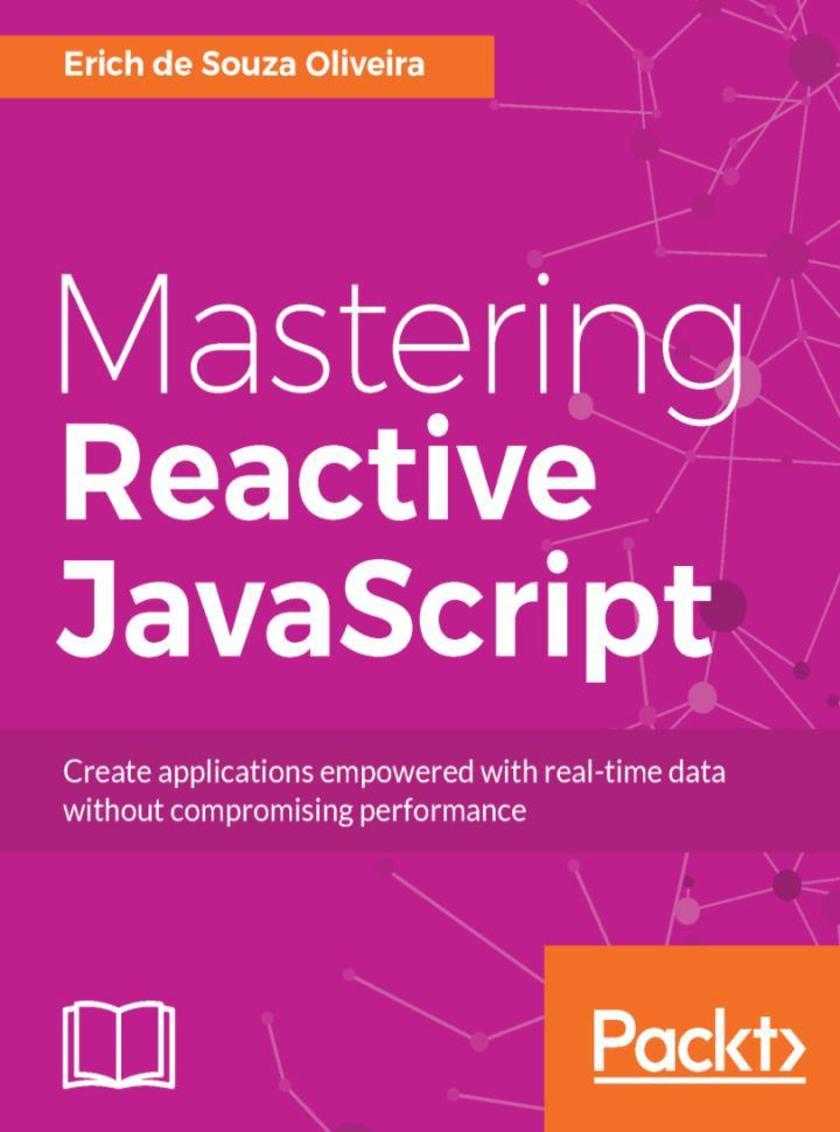
Mastering Reactive JavaScript
¥71.93
Expand your boundaries by creating applications empowered with real-time data using RxJs without compromising performance About This Book ? Handle an infinite stream of incoming data using RxJs without going crazy ? Explore important RxJs operators that can help you improve your code readability ? Get acquainted with the different techniques and operators used to handle data traffic, which occurs when you receive data faster than you can process Who This Book Is For If you're a web developer with some basic JavaScript programming knowledge who wants to implement the reactive programming paradigm with JavaScript, then this book is for you. What You Will Learn ? Get to know the basics of functional reactive programming using RxJs ? Process a continuous flow of data with linear memory consumption ? Filter, group, and react to changes in your system ? Discover how to deal with data traffic ? Compose operators to create new operators and use them in multiple observables to avoid code repetition ? Explore transducers and see how they can improve your code readability ? Detect and recover from errors in observables using Retry and Catch operators ? Create your own reactive application: a real-time webchat In Detail If you’re struggling to handle a large amount of data and don’t know how to improve your code readability, then reactive programming is the right solution for you. It lets you describe how your code behaves when changes happen and makes it easier to deal with real-time data. This book will teach you what reactive programming is, and how you can use it to write better applications. The book starts with the basics of reactive programming, what Reactive Extensions is, and how can you use it in JavaScript along with some reactive code using Bacon. Next, you’ll discover what an Observable and an Observer are and when to use them.You'll also find out how you can query data through operators, and how to use schedulers to react to changes. Moving on, you’ll explore the RxJs API, be introduced to the problem of data traffic (backpressure), and see how you can mitigate it. You’ll also learn about other important operators that can help improve your code readability, and you’ll see how to use transducers to compose operators. At the end of the book, you’ll get hands-on experience of using RxJs, and will create a real-time web chat using RxJs on the client and server, providing you with the complete package to master RxJs. Style and approach This easy-to-follow guide is full of hands-on examples of reactive programming. Each topic is explained and placed in context, and for the more inquisitive there are more details of the concepts used, ending with an application using the concepts learned through the book.
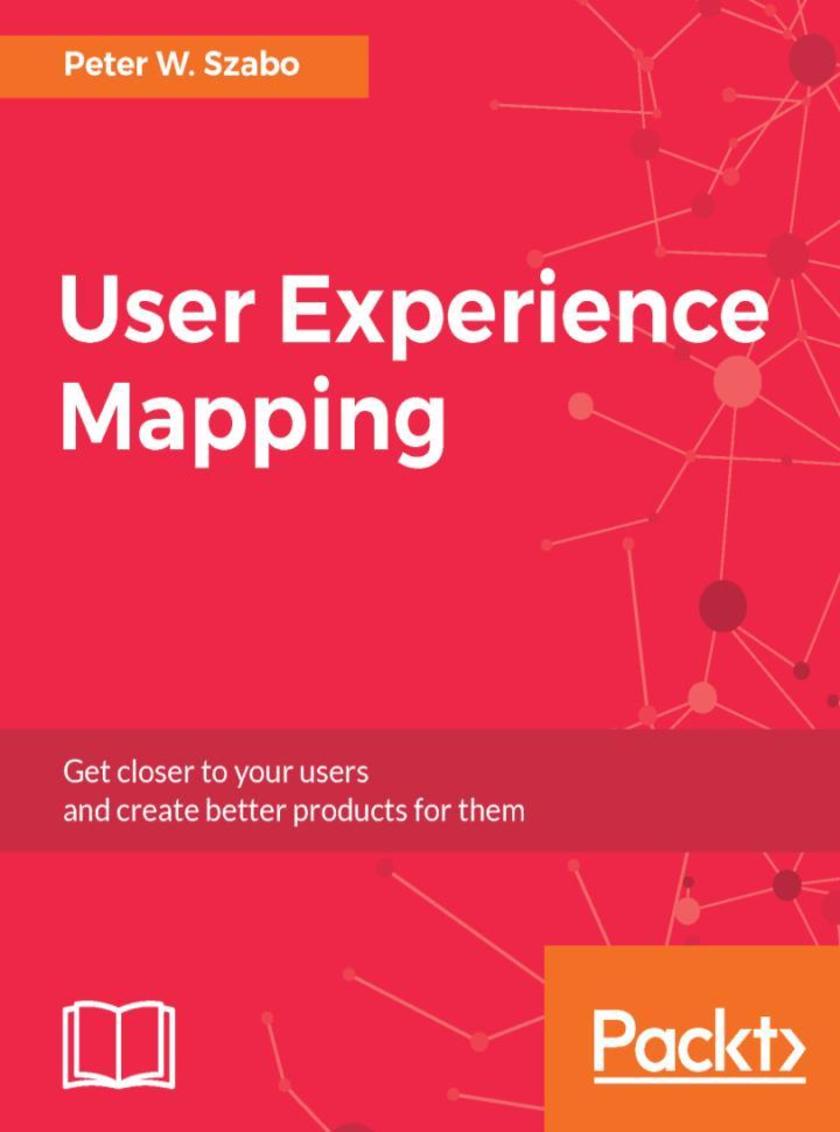
User Experience Mapping
¥71.93
Understand your users, gain strategic insights, and make your product development more efficient with user experience mapping About This Book ? Detailed guidance on the major types of User Experience Maps. ? Learn to gain strategic insights and improve communication with stakeholders . ? Get an idea on creating wireflows, mental model maps, ecosystem maps and solution maps Who This Book Is For This book is for Product Manager, Service Managers and Designers who are keen on learning the user experience mapping techniques. What You Will Learn ? Create and understand all common user experience map types. ? Use lab or remote user research to create maps and understand users better. ? Design behavioral change and represent it visually. ? Create 4D user experience maps, the “ultimate UX deliverable”. ? Capture many levels of interaction in a holistic view. ? Use experience mapping in an agile team, and learn how maps help in communicating within the team and with stakeholders. ? Become more user focused and help your organisation become user-centric. In Detail Do you want to create better products and innovative solutions? User Experience Maps will help you understand users, gain strategic insights and improve communication with stakeholders. Maps can also champion user-centricity within the organisation. Two advanced mapping techniques will be revealed for the first time in print, the behavioural change map and the 4D UX map. You will also explore user story maps, task models and journey maps. You will create wireflows, mental model maps, ecosystem maps and solution maps. In this book, the author will show you how to use insights from real users to create and improve your maps and your product. The book describes each major User Experience map type in detail. Starting with simple techniques based on sticky notes moving to more complex map types. In each chapter, you will solve a real-world problem with a map. The book contains detailed, beginner level tutorials on creating maps using different software products, including Adobe Illustrator, Balsamiq Mockups, Axure RP or Microsoft Word. Even if you don’t have access to any of those, each map type can also be drawn with pen and paper. Beyond creating maps, the book will also showcase communication techniques and workshop ideas. Although the book is not intended to be a comprehensive guide to modern user experience or product management, its novel ideas can help you create better solutions. You will also learn about the Kaizen-UX management framework, developed by the author, now used by many agencies and in-house UX teams in Europe and beyond. Buying this map will give you hundreds of hours worth of user experience knowledge, from one of the world’s leading UX consultants. It will change your users’ world for the better. If you are still not convinced, we have hidden some cat drawings in it, just in case. Style and approach An easy to understand guide, filled with real world use cases on how to plan, prioritize and visualize your project on customer experience
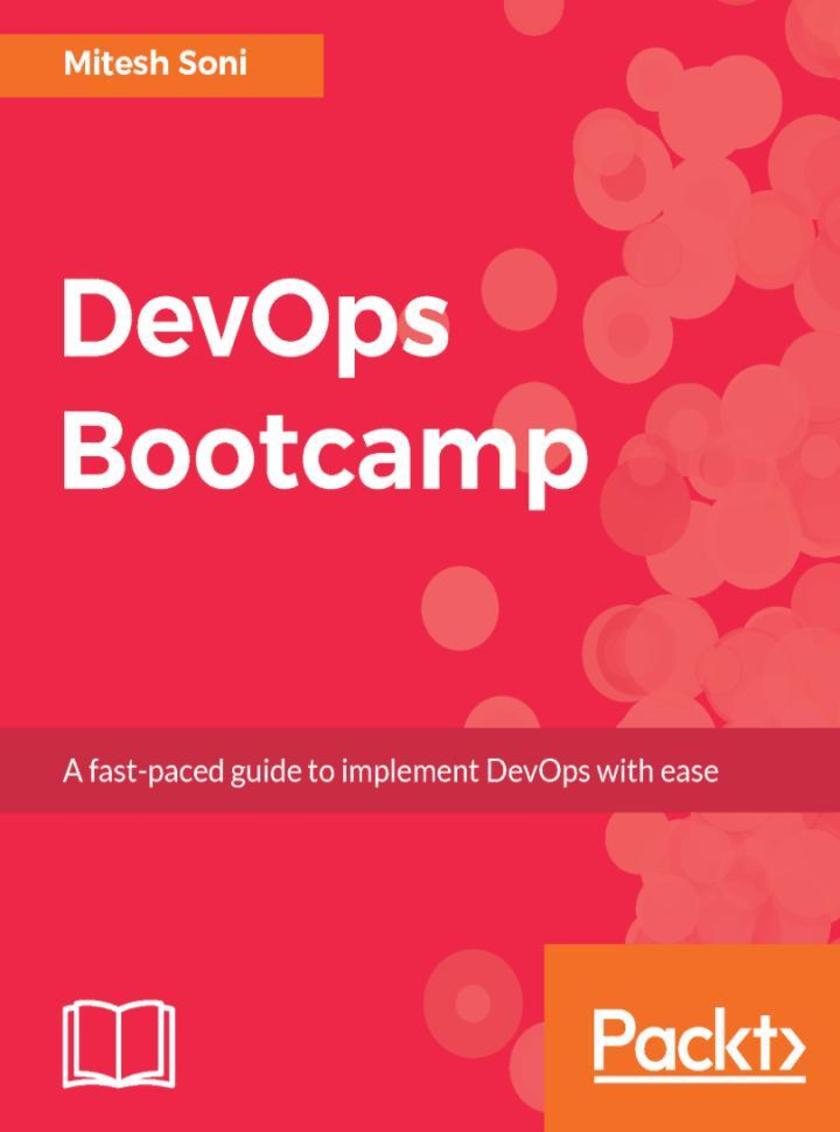
DevOps Bootcamp
¥71.93
Sharpen your DevOps knowledge with DevOps Bootcamp About This Book ? Improve your organization's performance to ensure smooth production of software and services. ? Learn how Continuous Integration and Continuous Delivery practices can be utilized to cultivate the DevOps culture. ? A fast-paced guide filled with illustrations and best practices to help you consistently ship quality software. Who This Book Is For The book is aimed at IT Developers and Operations—administrators who want to quickly learn and implement the DevOps culture in their organization. What You Will Learn ? Static Code Analysis using SOnarqube ? Configure a Maven-based JEE Web Application ? Perform Continuous Integration using Jenkins and VSTS ? Install and configure Docker ? Converge a Chef node using a Chef workstation ? Accomplish Continuous Delivery in Microsoft Azure VM and Microsoft Azure App Services (Azure Web Apps) using Jenkins ? Perform Load Testing using Apache JMeter ? Build and Release Automation using Visual Studio Team Services ? Monitor Cloud-based resources In Detail DevOps Bootcamp delivers practical learning modules in manageable chunks. Each chunk is delivered in a day, and each day is a productive one. Each day builds your competency in DevOps. You will be able to take the task you learn every day and apply it to cultivate the DevOps culture. Each chapter presents core concepts and key takeaways about a topic in DevOps and provides a series of hands-on exercises. You will not only learn the importance of basic concepts or practices of DevOps but also how to use different tools to automate application lifecycle management. We will start off by building the foundation of the DevOps concepts. On day two, we will perform Continuous Integration using Jenkins and VSTS both by configuring Maven-based JEE Web Application?. We will also integrate Jenkins and Sonar qube for Static Code Analysis. Further, on day three, we will focus on Docker containers where we will install and configure Docker and also create a Tomcat Container to deploy our Java based web application. On day four, we will create and configure the environment for application deployment in AWS and Microsoft Azure Cloud for which we will use Infrastructure as a Service and Open Source Configuration Management tool Chef. For day five, our focus would be on Continuous Delivery. We will automate application deployment in Docker container using Jenkins Plugin, AWS EC2 using Script, AWS Elastic Beanstalk using Jenkins Plugin, Microsoft Azure VM using *, and Microsoft Azure App Services Using Jenkins. We will also configure Continuous Delivery using VSTS. We will then learn the concept of Automated Testing on day six using Apache JMeter and URL-based tests in VSTS. Further, on day seven, we will explore various ways to automate application lifecycle management using orchestration. We will see how Pipeline can be created in Jenkins and VSTS, so the moment Continuous? Integration is completed successfully, Continuous Delivery will start and application will be deployed. On the final day, our focus would be on Security access to Jenkins and Monitoring of CI resources, and cloud-based resources in AWS and Microsoft Azure Platform as a Service. Style and Approach This book is all about fast and intensive learning. This means we don’t waste time in helping readers get started. The new content is basically about filling in with highly-effective examples to build new things, solving problems in newer and unseen ways, and solving real-world examples.
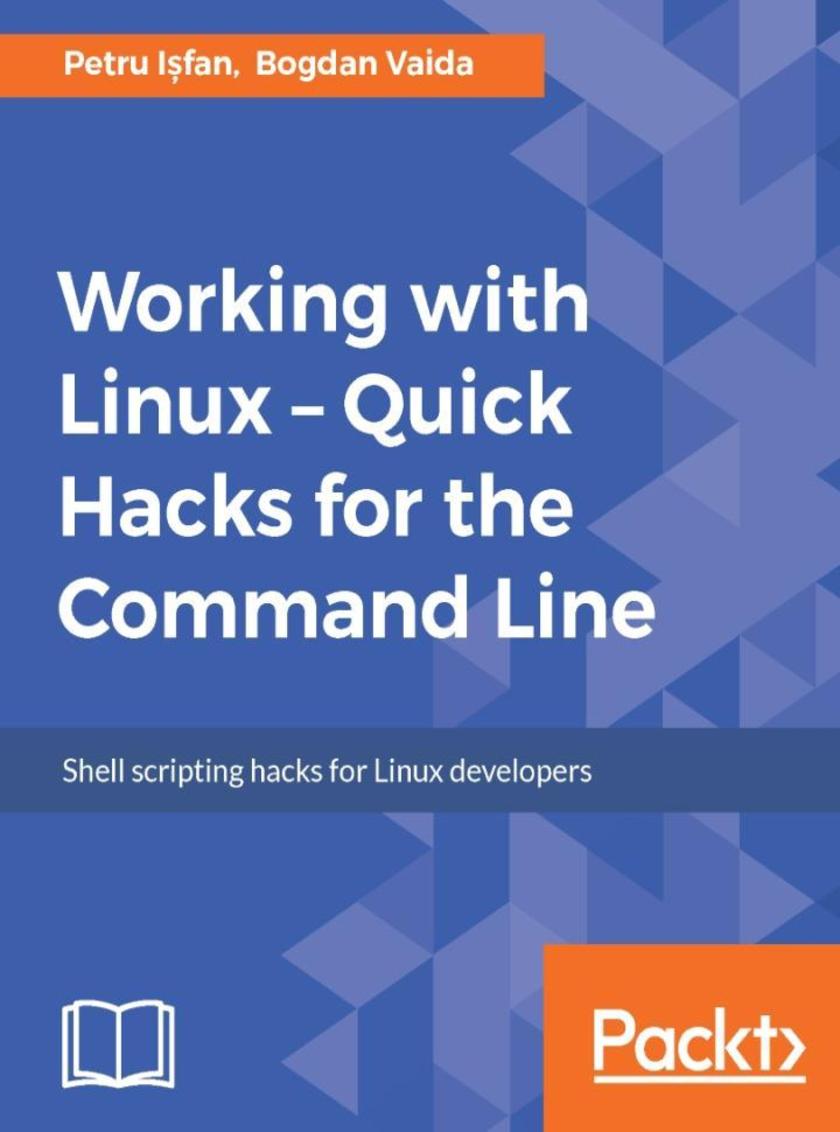
Working with Linux – Quick Hacks for the Command Line
¥71.93
Say goodbye to unproductive Linux habits and switch to the express lane About This Book ? Improve your terminal and command-line productivity by using powerful tools ? Sharpen your existing command-line skills and achieve complex tasks faster ? Save time and money by creating customized commands that automate day-to-day tasks Who This Book Is For This book is for system administrators and developers who know the basics of Linux and want to brush up and sharpen their skills. Prior experience with Linux shell is required. What You Will Learn ? Optimize the power of Guake by integrating it with ClipIt ? Deep dive into the workings of the console editor—Vim ? Explore the advanced concepts and best practices of shell *ing ? Edit large amounts of data quickly using Sed ? Use pipes and subshells to create customized commands ? Get to know how you can speed up the software development and make the terminal a handy companion In Detail Websites, online services, databases, and pretty much every other computer that offers public services runs on Linux. From small servers to clusters, Linux is anywhere and everywhere. With such a broad usage, the demand for Linux specialists is ever growing. For the engineers out there, this means being able to develop, interconnect, and maintain Linux environments. This book will help you increase your terminal productivity by using Terminator, Guake and other tools. It will start by installing Ubuntu and will explore tools and techniques that will help you to achieve more work with less effort. Next, it will then focus on Terminator, the ultimate terminal, and vim, one of the most intelligent console editors. Futhermore, the readers will see how they can increase their command line productivity by using sed, find, tmux, network, autoenv. The readers will also see how they can edit files without leaving the terminal and use the screen space efficiently and copy-paste like a pro. Towards the end, we focus on network settings, Git hacks, and creating portable environments for development and production using Docker. Through this book, you will improve your terminal productivity by seeing how to use different tools. Style and Approach This book takes a step-by-step approach using examples that show you how to automate tasks using terminal commands. You’ll work through easy-to-follow instructions so you learn to use the various Linux commands and tools such as Terminator, Guake, and others.
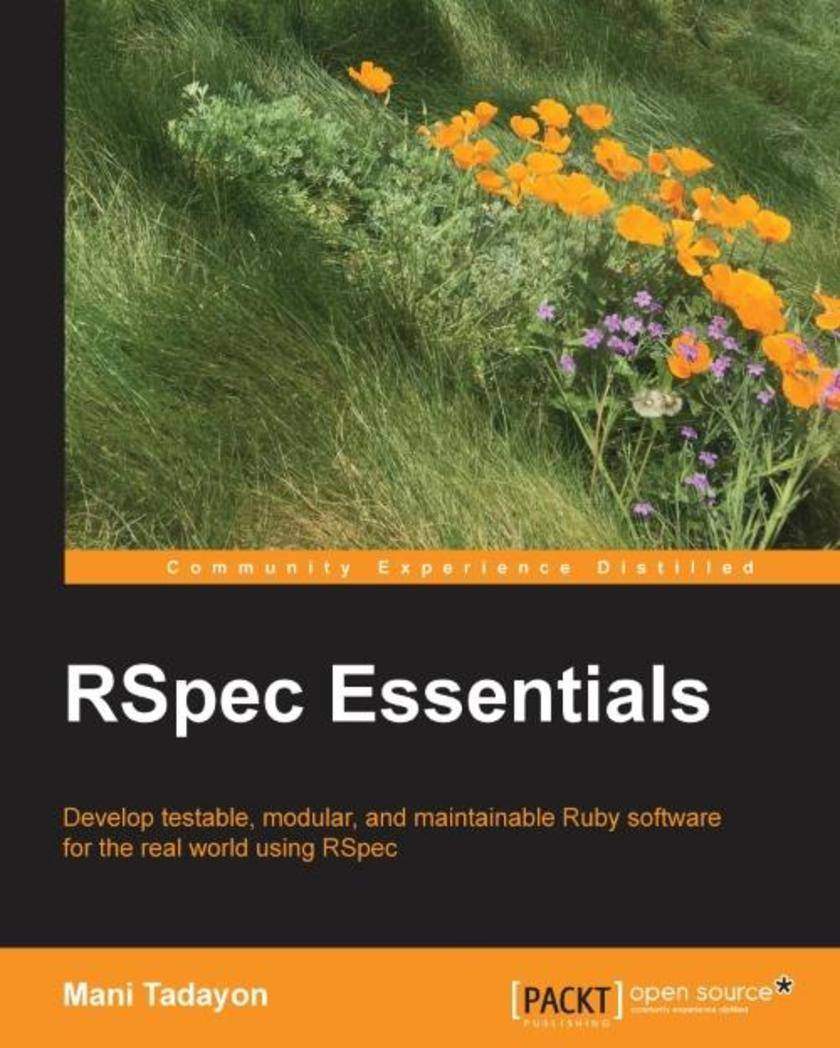
RSpec Essentials
¥71.93
Develop testable, modular, and maintainable Ruby software for the real world using RSpec About This Book Explore the concept of testability and how to implement tests that deliver the most value Maximize the quality of your Ruby code through a wide variety of tests Master the real-world tradeoffs of testing through detailed examples supported by in-depth discussion Who This Book Is For This book is aimed at the software engineer who wants to make their code more reliable and their development process easier. It is also aimed at test engineers who need to automate the testing of complex systems. Knowledge of Ruby is helpful, but even someone new to the language should find it easy to follow the code and tests. What You Will Learn Identify a unit of software for the purposes of testing Manage test states with hooks, fixtures, and mocks Handle external web services in tests using various techniques Configure RSpec flexibly and cleanly using support code and environment variables Interact with rich web apps in tests using Capybara Build the right feature with behavior-driven development Customize matchers and failure messages Verify correct development and production environments In Detail This book will teach you how to use RSpec to write high-value tests for real-world code. We start with the key concepts of the unit and testability, followed by hands-on exploration of key features. From the beginning, we learn how to integrate tests into the overall development process to help create high-quality code, avoiding the dangers of testing for its own sake. We build up sample applications and their corresponding tests step by step, from simple beginnings to more sophisticated versions that include databases and external web services. We devote three chapters to web applications with rich JavaScript user interfaces, building one from the ground up using behavior-driven development (BDD) and test-driven development (TDD). The code examples are detailed enough to be realistic while simple enough to be easily understood. Testing concepts, development methodologies, and engineering tradeoffs are discussed in detail as they arise. This approach is designed to foster the reader’s ability to make well-informed decisions on their own. Style and approach This comprehensive tutorial is packed with real-world examples of testing with RSpec. The most important features of RSpec are introduced in the early chapters and are used in examples of growing complexity in the following chapters. Concepts and methodologies are discussed in detail.
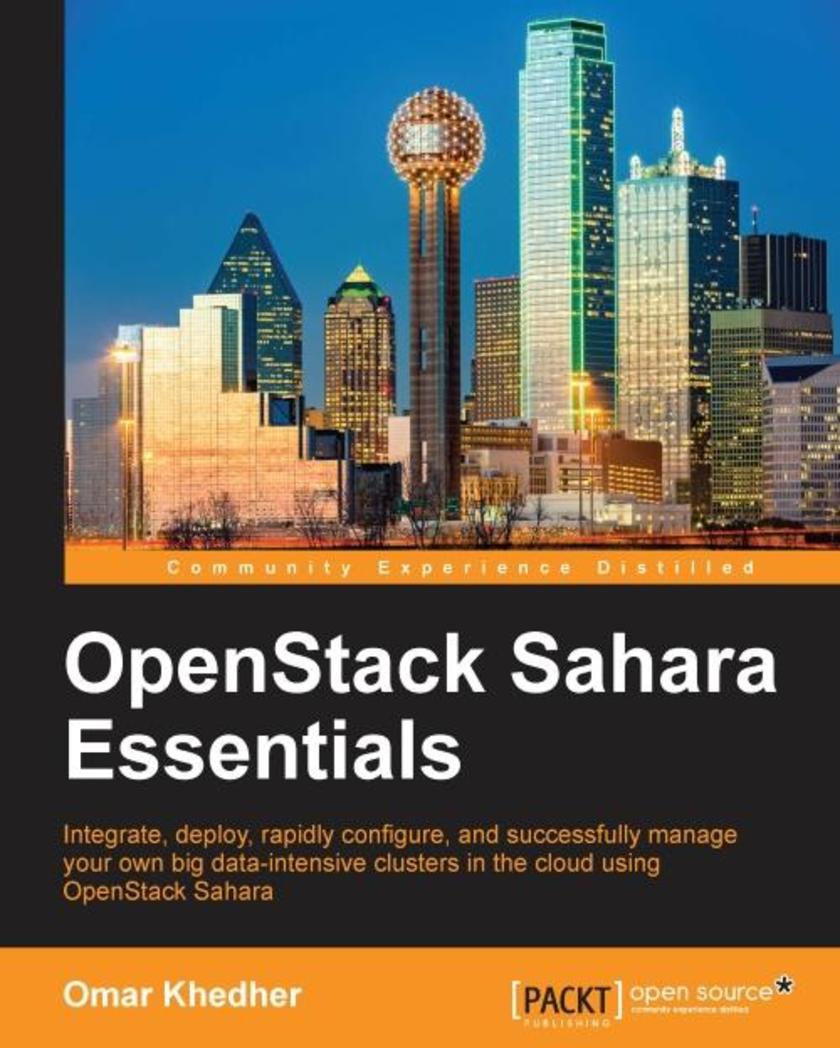
OpenStack Sahara Essentials
¥71.93
Integrate, deploy, rapidly configure, and successfully manage your own big data-intensive clusters in the cloud using OpenStack Sahara About This Book A fast paced guide to help you utilize the benefits of Sahara in OpenStack to meet the Big Data world of Hadoop. A step by step approach to simplify the complexity of Hadoop configuration, deployment and maintenance. Who This Book Is For This book targets data scientists, cloud developers and Devops Engineers who would like to become proficient with OpenStack Sahara. Ideally, this book is well suitable for readers who are familiars with databases, Hadoop and Spark solutions. Additionally, a basic prior knowledge of OpenStack is expected. The readers should also be familiar with different Linux boxes, distributions and virtualization technology. What You Will Learn Integrate and Install Sahara with OpenStack environment Learn Sahara architecture under the hood Rapidly configure and scale Hadoop clusters on top of OpenStack Explore the Sahara REST API to create, deploy and manage a Hadoop cluster Learn the Elastic Processing Data (EDP) facility to execute jobs in clusters from Sahara Cover other Hadoop stable plugins existing supported by Sahara Discover different features provided by Sahara for Hadoop provisioning and deployment Learn how to troubleshoot OpenStack Sahara issues In Detail The Sahara project is a module that aims to simplify the building of data processing capabilities on OpenStack. The goal of this book is to provide a focused, fast paced guide to installing, configuring, and getting started with integrating Hadoop with OpenStack, using Sahara. The book should explain to users how to deploy their data-intensive Hadoop and Spark clusters on top of OpenStack. It will also cover how to use the Sahara REST API, how to develop applications for Elastic Data Processing on Openstack, and setting up hadoop or spark clusters on Openstack. Style and approach This book takes a step by step approach teaching how to integrate, deploy and manage data using OpenStack Sahara. It will teach how the OpenStack Sahara is beneficial by simplifying the complexity of Hadoop configuration, deployment and maintenance.
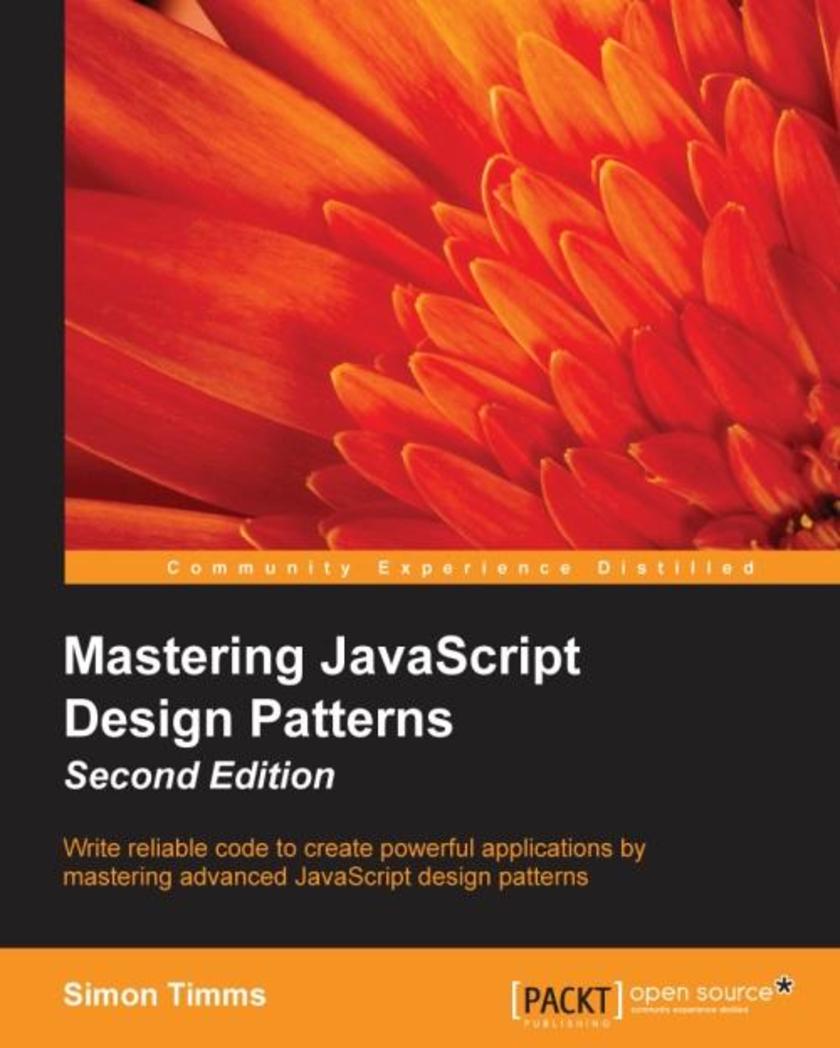
Mastering JavaScript Design Patterns - Second Edition
¥71.93
Write reliable code to create powerful applications by mastering advanced JavaScript design patterns About This Book Learn how to use tried and true software design methodologies to enhance your JavaScript code Discover robust JavaScript implementations of classic and advanced design patterns Packed with easy-to-follow examples that can be used to create reusable code and extensible designs Who This Book Is For This book is ideal for JavaScript developers who want to gain expertise in object-oriented programming with JavaScript and the new capabilities of ES-2015 to improve their web development skills and build professional-quality web applications. What You Will Learn Harness the power of patterns for tasks ranging from application building to code testing Rethink and revitalize your code with the use of functional patterns Improve the way you organize your code Build large-scale apps seamlessly with the help of reactive patterns Identify the best use cases for microservices Get to grips with creational, behavioral, and structural design patterns Explore advanced design patterns including dependency injection In Detail With the recent release of ES-2015, there are several new object-oriented features and functions introduced in JavaScript. These new features enhance the capabilities of JavaScript to utilize design patterns and software design methodologies to write powerful code. Through this book, you will explore how design patterns can help you improve and organize your JavaScript code. You’ll get to grips with creational, structural and behavioral patterns as you discover how to put them to work in different scenarios. Then, you'll get a deeper look at patterns used in functional programming, as well as model view patterns and patterns to build web applications. This updated edition will also delve into reactive design patterns and microservices as they are a growing phenomenon in the world of web development. You will also find patterns to improve the testability of your code using mock objects, mocking frameworks, and monkey patching. We’ll also show you some advanced patterns including dependency injection and live post processing. By the end of the book, you'll be saved of a lot of trial and error and developmental headaches, and you will be on the road to becoming a JavaScript expert. Style and approach Packed with several real-world use cases, this book shows you through step-by-step instructions how to implement the advanced object-oriented programming features to build sophisticated web applications that promote scalability and reusability.
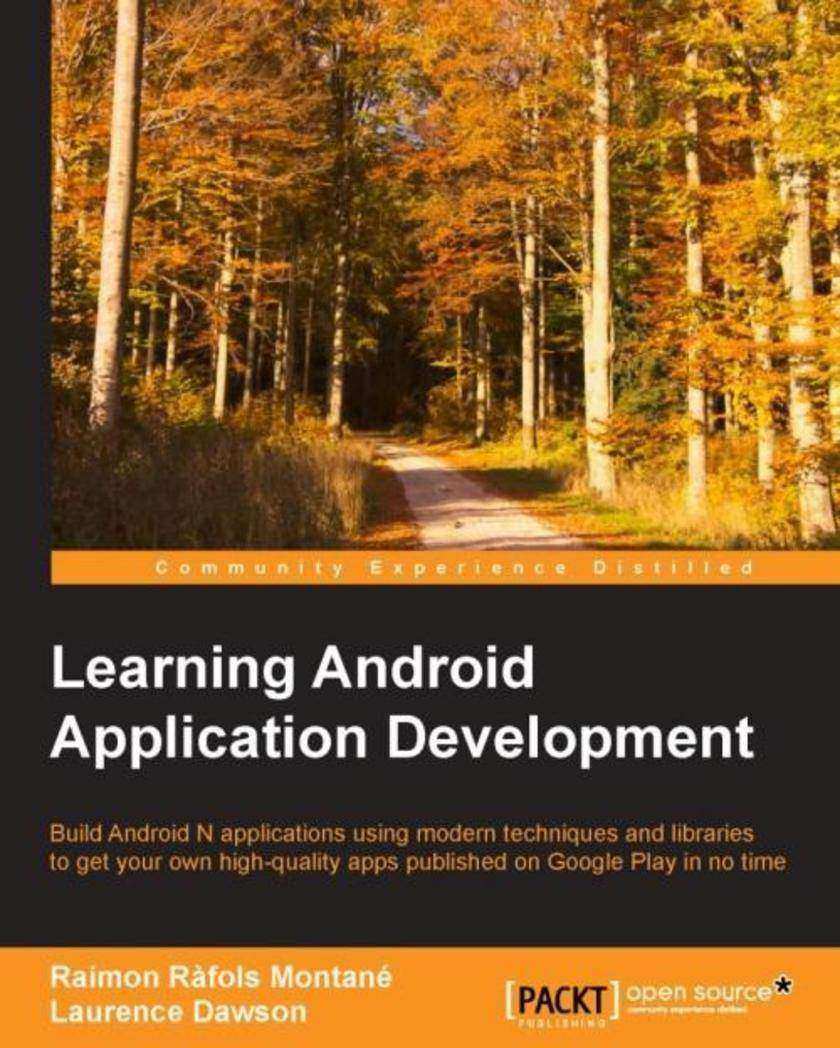
Learning Android Application Development
¥71.93
Build Android N applications using modern techniques and libraries to get your own high-quality apps published on Google Play in no time About This Book Get started with Android development, from the installation of required tools to publishing to the market Make your applications Android N ready—Android has evolved quite a lot since the very beginning and so has their Software Development Kit—so get up to speed Save time and improve the quality of your applications with widely used open source libraries and dependency management Who This Book Is For Want to get started with Android developmentStart here. What You Will Learn Get to know how to use popular open source libraries to reduce time to market and avoid re-inventing the wheel Automate your application’s testing phase to avoid last minute crashes Use dependency management to properly keep dependencies and updates under control Efficiently show huge amounts of items in a list Forget about memory and speed concerns Publish and monetize your Android applications on Google Play Persist your application data so it can continue working in offline mode Don’t let the UX break because of network issues In Detail The mobile app market is huge. But where do you startAnd how you can deliver something that takes Google Play by stormThis guide is the perfect route into Android app development – while it’s easy for new apps to sink without a trace, we’ll give you the best chance of success with practical and actionable guidance that will unlock your creativity and help you put the principles of Android development into practice. From the fundamentals and getting your project started to publishing your app to a huge market of potential customers, follow this guide to become a confident, creative and reliable mobile developer. Get to grips with new components in Android 7 such as RecyclerView, and find out how to take advantage of automated testing, and, of course, much, much more. What are you waiting forThere’s never been a better time – or a better way – to get into Android app development. Style and approach More than just a manual, this is an accessible route into Android development. Packed with examples that demonstrate how to put key concepts and ideas into practice, this guide isn’t just about learning, it’s about immediate development.
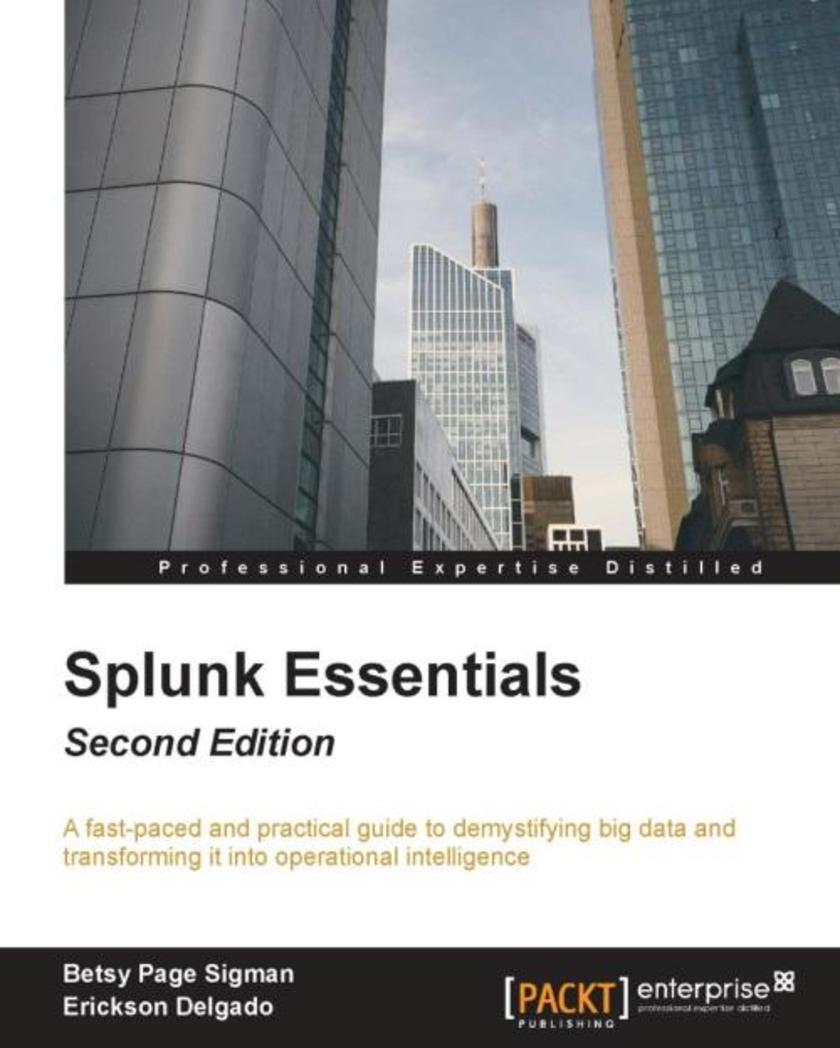
Splunk Essentials - Second Edition
¥71.93
A fast-paced and practical guide to demystifying big data and transforming it into operational intelligence About This Book Want to get started with Splunk to analyze and visualize machine dataOpen this book and step into the world of Splunk. Leverage the exceptional analysis and visualization capabilities to make informed decisions for your business This easy-to-follow, practical book can be used by anyone, even if you have never managed any data before Who This Book Is For This book will be perfect for you if you are a Software engineer or developer or System administrators or Business analyst who seek to correlate machine data with business metrics and provide intuitive real-time and statistical visualizations. Some knowledge or experience of previous versions of Splunk will be helpful but not essential. What You Will Learn Install and configure Splunk Gather data from different sources, isolate them by indexes, classify them into source types, and tag them with the essential fields Be comfortable with the Search Processing Language and get to know the best practices in writing search queries Create stunning and powerful dashboards Be proactive by implementing alerts and scheduled reports Use the Splunk SDK and integrate Splunk data into other applications Implement the best practices in using Splunk. In Detail Splunk is a search, analysis, and reporting platform for machine data, which has a high adoption on the market. More and more organizations want to adopt Splunk to use their data to make informed decisions. This book is for anyone who wants to manage data with Splunk. You’ll start with very basics of Splunk— installing Splunk—and then move on to searching machine data with Splunk. You will gather data from different sources, isolate them by indexes, classify them into source types, and tag them with the essential fields. After this, you will learn to create various reports, XML forms, and alerts. You will then continue using the Pivot Model to transform the data models into visualization. You will also explore visualization with D3 in Splunk. Finally you’ll be provided with some real-world best practices in using Splunk. Style and approach This fast-paced, example-rich guide will help you analyze and visualize machine data with Splunk through simple, practical instructions.
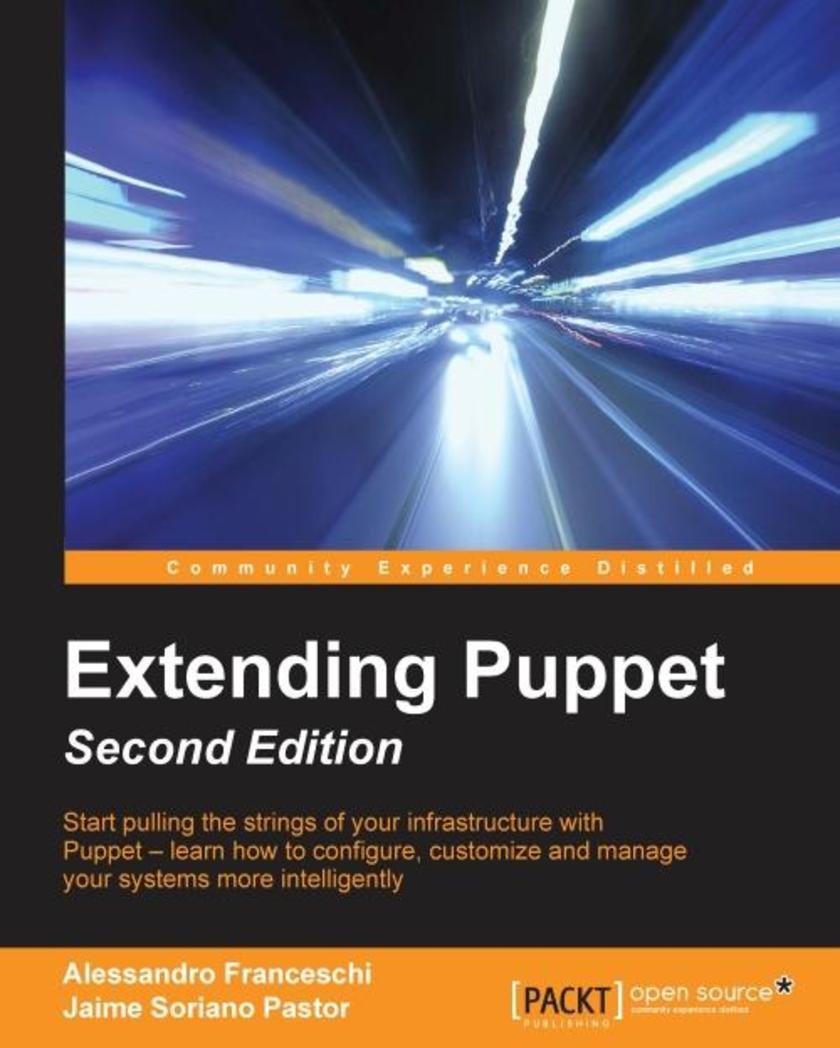
Extending Puppet - Second Edition
¥71.93
Start pulling the strings of your infrastructure with Puppet – learn how to configure, customize, and manage your systems more intelligently About This Book Explore the wider Puppet ecosystem of useful tools Design and manage your Puppet architecture for optimum performance Write more efficient code that keeps your infrastructure more robust Who This Book Is For If you are a Puppet user, this book will help you on different levels. If you a beginner, we summarize the key Puppet components and give you the elements to have a broader vision. For more experienced users, you will be surprised by with topics on designing, implementing, adapting, and deploying Puppet architectures. If you are expert, you will find topics and information that is rarely exposed in other books, giving you an insight into Puppet's future and its usage on alternative devices. What You Will Learn Learn the principles of Puppet language and ecosystem Extract the features of Hiera and PuppetDB’s power usage Explore the different approaches to Puppet architecture design Use Puppet to manage network, cloud, and virtualization devices Manage and test the Puppet code workflow Tweak, hack, and adapt the Puppet extension points Get a run through of the strategies and patterns to introduce Puppet automation Master the art of writing reusable modules In Detail Puppet has changed the way we manage our systems, but Puppet itself is changing and evolving, and so are the ways we are using it. To tackle our IT infrastructure challenges and avoid common errors when designing our architectures, an up-to-date, practical, and focused view of the current and future Puppet evolution is what we need. With Puppet, you define the state of your IT infrastructure, and it automatically enforces the desired state. This book will be your guide to designing and deploying your Puppet architecture. It will help you utilize Puppet to manage your IT infrastructure. Get to grips with Hiera and learn how to install and configure it, before learning best practices for writing reusable and maintainable code. You will also be able to explore the latest features of Puppet 4, before executing, testing, and deploying Puppet across your systems. As you progress, Extending Puppet takes you through higher abstraction modules, along with tips for effective code workflow management. Finally, you will learn how to develop plugins for Puppet - as well as some useful techniques that can help you to avoid common errors and overcome everyday challenges. Style and approach This is a collection of specific information about multiple topics related to Puppet and its ecosystem. Starting from a review of the very basics to more advanced topics, mixing practical advice with important theory and broader perspective, along with implementation details.

Magento Extensions Development
¥71.93
Design, build, and maintain a powerful, secure, and complete extension for Magento 2, the world’s favorite e-commerce platform About This Book Deploy a complete real-world extension step by step Construct your extension with the best and most up-to-date development methods Learn about team working and code sharing Who This Book Is For If you want to write a specific customization or a large new and full-featured extension on Magento 2, this book is intended for you. You must be an intermediate to professional-level developer in PHP to appreciate this book. What You Will Learn Build a fully-functional complex extension to add new functionality to Magento Register your code with GIT and work with your team Write new layouts and templates Set up a fully configurable grid and forms in the backend Create code unit tests and run them through TDD Propose localized contents Develop optimized extensions for a high-load environment Publish extensions on the Magento Connect Marketplace In Detail Magento has been revealed as the best and the most popular open source e-commerce platform in the world, with about 250k+ online stores. Magento 2 is the most recent version of this awesome toolset: every new and modern development techniques are used to offer a real modular approach and powerful architecture. The book will support you in the writing of innovative and complex extensions. Starting from the beginning, we will cover how to set up a development environment that allows you to be really efficient in your functionality writing, including GIT registering and many other development tools. We then move on to provide a large overview of the best practices to scale your module in a high-load environment. After these foundations, you will see how to use test driven-development (TDD) and unit tests to handle your code. We then build a complex extension together, step by step, and internationally-ready. Next, you will find out how to protect the users’ data. Finally, we will take a look a publishing the extension on the new Magento Connect marketplace and how to protect your intellectual property. After you read this book, you will know everything you need to know to become an invaluable extension editor, whether it is for your customers’ needs or for your own requirements. Style and approach This book takes a step-by-step approach to developing the extension and learning the new concepts of developments. Each topic is explained sequentially in the process of creating the extension, and punctuated by detailed explanations of the features of the code.
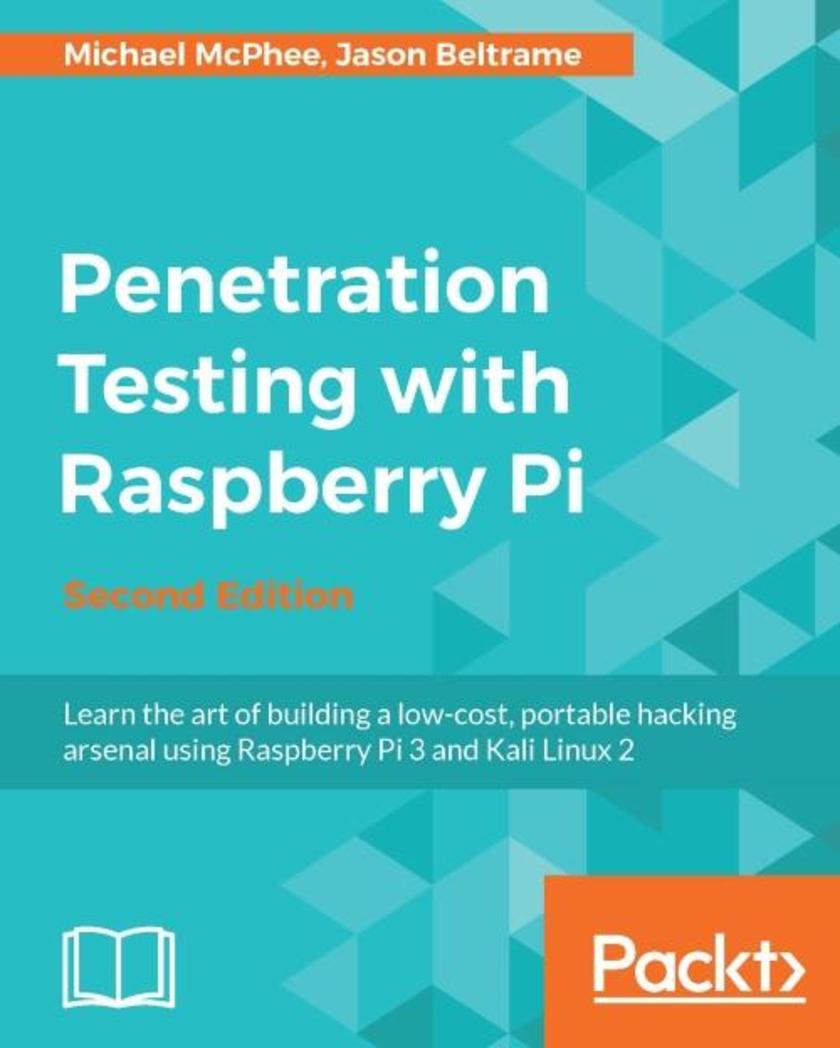
Penetration Testing with Raspberry Pi - Second Edition
¥71.93
Learn the art of building a low-cost, portable hacking arsenal using Raspberry Pi 3 and Kali Linux 2 About This Book Quickly turn your Raspberry Pi 3 into a low-cost hacking tool using Kali Linux 2 Protect your confidential data by deftly preventing various network security attacks Use Raspberry Pi 3 as honeypots to warn you that hackers are on your wire Who This Book Is For If you are a computer enthusiast who wants to learn advanced hacking techniques using the Raspberry Pi 3 as your pentesting toolbox, then this book is for you. Prior knowledge of networking and Linux would be an advantage. What You Will Learn Install and tune Kali Linux 2 on a Raspberry Pi 3 for hacking Learn how to store and offload pentest data from the Raspberry Pi 3 Plan and perform man-in-the-middle attacks and bypass advanced encryption techniques Compromise systems using various exploits and tools using Kali Linux 2 Bypass security defenses and remove data off a target network Develop a command and control system to manage remotely placed Raspberry Pis Turn a Raspberry Pi 3 into a honeypot to capture sensitive information In Detail This book will show you how to utilize the latest credit card sized Raspberry Pi 3 and create a portable, low-cost hacking tool using Kali Linux 2. You’ll begin by installing and tuning Kali Linux 2 on Raspberry Pi 3 and then get started with penetration testing. You will be exposed to various network security scenarios such as wireless security, scanning network packets in order to detect any issues in the network, and capturing sensitive data. You will also learn how to plan and perform various attacks such as man-in-the-middle, password cracking, bypassing SSL encryption, compromising systems using various toolkits, and many more. Finally, you’ll see how to bypass security defenses and avoid detection, turn your Pi 3 into a honeypot, and develop a command and control system to manage a remotely-placed Raspberry Pi 3. By the end of this book you will be able to turn Raspberry Pi 3 into a hacking arsenal to leverage the most popular open source toolkit, Kali Linux 2.0. Style and approach This concise and fast-paced guide will ensure you get hands-on with penetration testing right from the start. You will quickly install the powerful Kali Linux 2 on your Raspberry Pi 3 and then learn how to use and conduct fundamental penetration techniques and attacks.
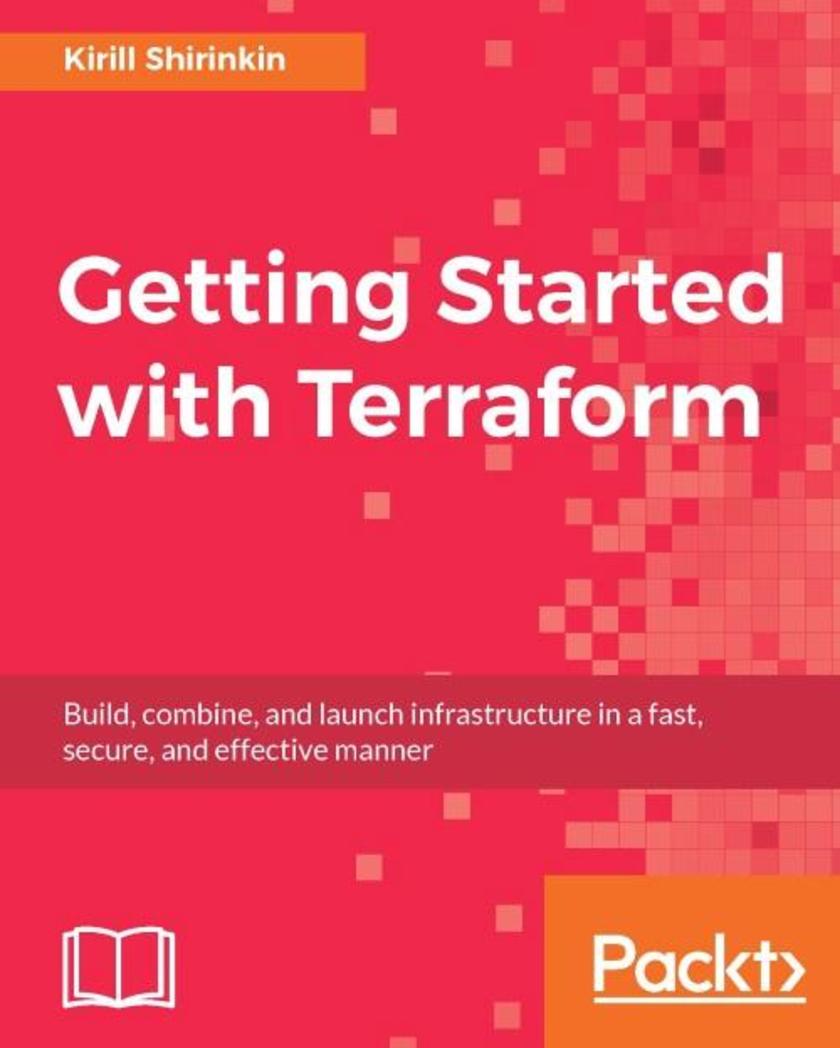
Getting Started with Terraform
¥71.93
Build, combine, and launch infrastructure in a fast, secure, and effective manner About This Book An up-to-date and comprehensive resource on Terraform that lets you quickly and efficiently launch your infrastructure Learn how to implement your infrastructure as code and make secure, effective changes to your infrastructure Learn to build multi-cloud fault-tolerant systems and simplify the management and orchestration of even the largest scale and most complex cloud infrastructures Who This Book Is For This book is for developers and operators who already have some exposure to working with infrastructure but want to improve their workflow and introduce infrastructure as a code practice. Knowledge of essential Amazon Web Services components (EC2, VPC, IAM) would help contextualize the examples provided. Basic understanding of Jenkins and Shell *s will be helpful for the chapters on the production usage of Terraform. What You Will Learn Understand what Infrastructure as Code (IaC) means and why it matters Install, configure, and deploy Terraform Take full control of your infrastructure in the form of code Manage complete complete infrastructure, starting with a single server and scaling beyond any limits Discover a great set of production-ready practices to manage infrastructure Set up CI/CD pipelines to test and deliver Terraform stacks Construct templates to simplify more complex provisioning tasks In Detail Terraform is a tool used to efficiently build, configure, and improve production infrastructure. It can manage existing infrastructure as well as create custom in-house solutions. This book shows you when and how to implement infrastructure as a code practices with Terraform. It covers everything necessary to set up complete management of infrastructure with Terraform, starting with the basics of using providers and resources. This book is a comprehensive guide that begins with very small infrastructure templates and takes you all the way to managing complex systems, all using concrete examples that evolve over the course of the book. It finishes with the complete workflow of managing a production infrastructure as code – this is achieved with the help of version control and continuous integration. At the end of this book, you will be familiar with advanced techniques such as multi-provider support and multiple remote modules. Style and approach This book focuses on providing the practical skills required to make full use of Terraform. It will take the readers slowly from very small infrastructure templates to the managing complex systems, all by using concrete examples, evolving over the course of the book.
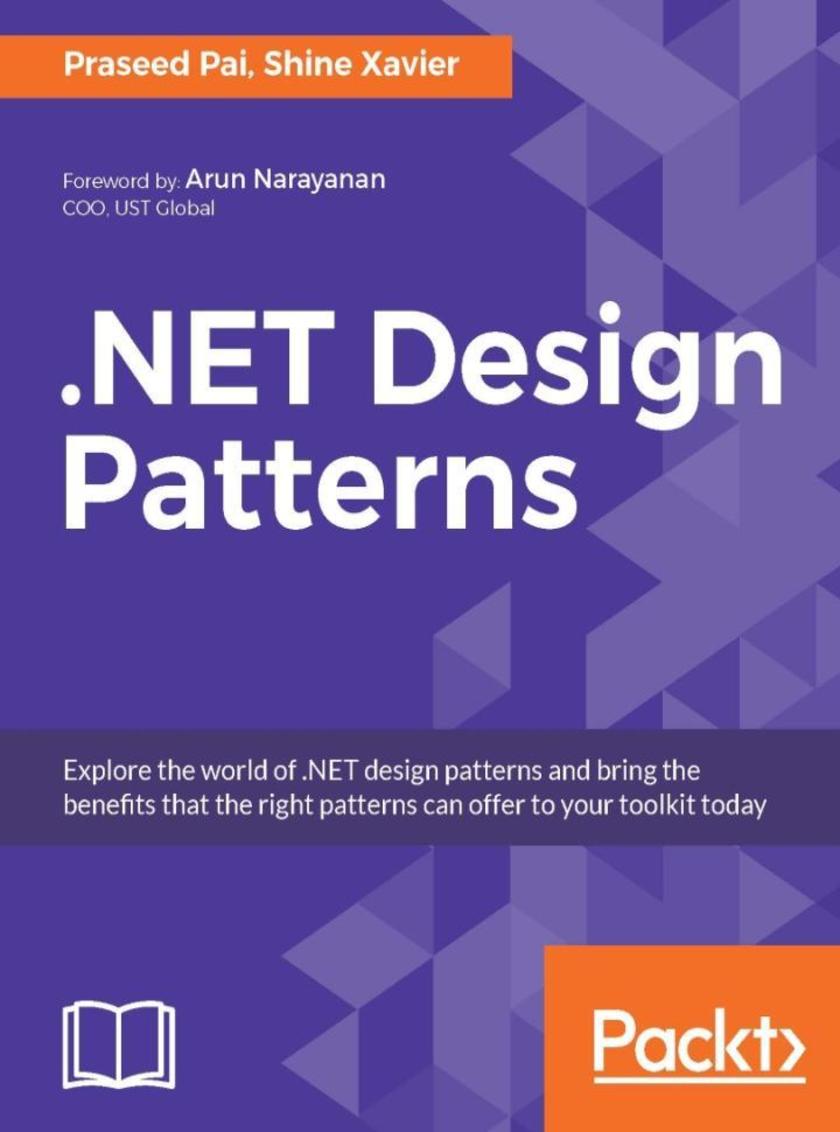
.NET Design Patterns
¥71.93
Explore the world of .NET design patterns and bring the benefits that the right patterns can offer to your toolkit today About This Book This book is based on the latest version of .NET, .NET Core 1.0.·The code is explained piece by piece and the application of the pattern is also showcased. This fast-paced guide shows you how to implement the patterns into your existing applications Who This Book Is For This book is for those with familiarity with .NET development who would like to take their skills to the next level and be in the driver's seat when it comes to modern development techniques. Basic object-oriented C# programming experience and an elementary familiarity with the .NET framework library is required. What You Will Learn Put patterns and pattern catalogs into the right perspective Apply patterns for software development under C#/.NET Use GoF and other patterns in real-life development scenarios Be able to enrich your design vocabulary and well articulate your design thoughts Leverage object/functional programming by mixing OOP and FP Understand the reactive programming model using Rx and RxJs Writing compositional code using C# LINQ constructs Be able to implement concurrent/parallel programming techniques using idioms under .NET Avoiding pitfalls when creating compositional, readable, and maintainable code using imperative, functional, and reactive code. In Detail Knowing about design patterns enables developers to improve their code base, promoting code reuse and making their design more robust. This book focuses on the practical aspects of programming in .NET. You will learn about some of the relevant design patterns (and their application) that are most widely used. We start with classic object-oriented programming (OOP) techniques, evaluate parallel programming and concurrency models, enhance implementations by mixing OOP and functional programming, and finally to the reactive programming model where functional programming and OOP are used in synergy to write better code. Throughout this book, we'll show you how to deal with architecture/design techniques, GoF patterns, relevant patterns from other catalogs, functional programming, and reactive programming techniques. After reading this book, you will be able to convincingly leverage these design patterns (factory pattern, builder pattern, prototype pattern, adapter pattern, facade pattern, decorator pattern, observer pattern and so on) for your programs. You will also be able to write fluid functional code in .NET that would leverage concurrency and parallelism! Style and approach This tutorial-based book takes a step-by-step approach. It covers the major patterns and explains them in a detailed manned along with code examples.
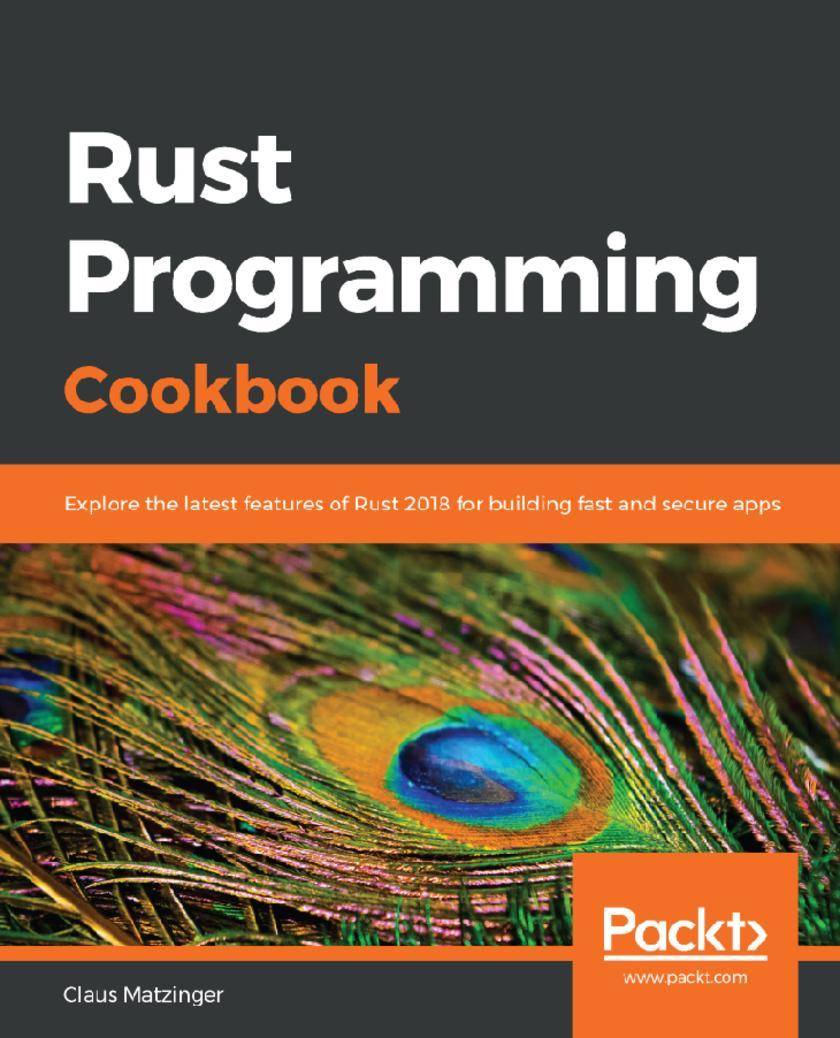
Rust Programming Cookbook
¥71.93
Practical solutions to overcome challenges in creating console and web applications and working with systems-level and embedded code, network programming, deep neural networks, and much more. Key Features * Work through recipes featuring advanced concepts such as concurrency, unsafe code, and macros to migrate your codebase to the Rust programming language * Learn how to run machine learning models with Rust * Explore error handling, macros, and modularization to write maintainable code Book Description Rust 2018, Rust's first major milestone since version 1.0, brings more advancement in the Rust language. The Rust Programming Cookbook is a practical guide to help you overcome challenges when writing Rust code. This Rust book covers recipes for configuring Rust for different environments and architectural designs, and provides solutions to practical problems. It will also take you through Rust's core concepts, enabling you to create efficient, high-performance applications that use features such as zero-cost abstractions and improved memory management. As you progress, you'll delve into more advanced topics, including channels and actors, for building scalable, production-grade applications, and even get to grips with error handling, macros, and modularization to write maintainable code. You will then learn how to overcome common roadblocks when using Rust for systems programming, IoT, web development, and network programming. Finally, you'll discover what Rust 2018 has to offer for embedded programmers. By the end of the book, you'll have learned how to build fast and safe applications and services using Rust. What you will learn * Understand how Rust provides unique solutions to solve system programming language problems * Grasp the core concepts of Rust to develop fast and safe applications * Explore the possibility of integrating Rust units into existing applications for improved efficiency * Discover how to achieve better parallelism and security with Rust * Write Python extensions in Rust * Compile external assembly files and use the Foreign Function Interface (FFI) * Build web applications and services using Rust for high performance Who this book is for The Rust cookbook is for software developers looking to enhance their knowledge of Rust and leverage its features using modern programming practices. Familiarity with Rust language is expected to get the most out of this book.
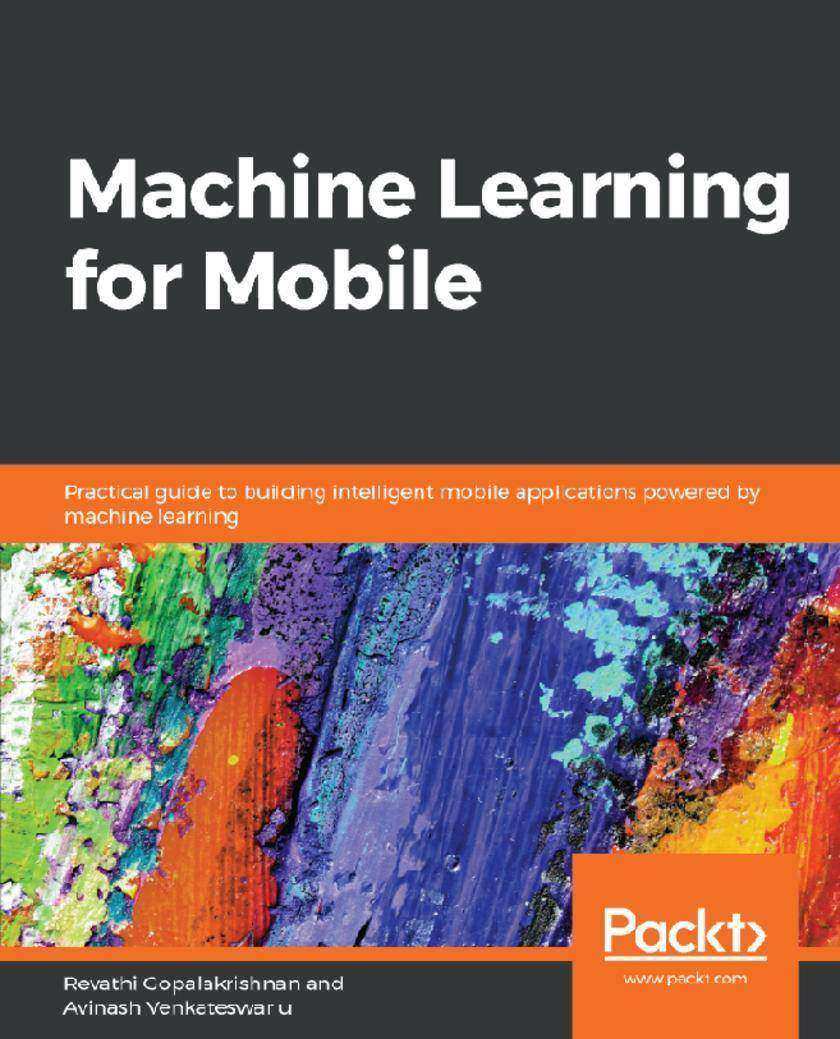
Machine Learning for Mobile
¥71.93
Leverage the power of machine learning on mobiles and build intelligent mobile applications with ease Key Features *Build smart mobile applications for Android and iOS devices *Use popular machine learning toolkits such as Core ML and TensorFlow Lite *Explore cloud services for machine learning that can be used in mobile apps Book Description Machine learning presents an entirely unique opportunity in software development. It allows smartphones to produce an enormous amount of useful data that can be mined, analyzed, and used to make predictions. This book will help you master machine learning for mobile devices with easy-to-follow, practical examples. You will begin with an introduction to machine learning on mobiles and grasp the fundamentals so you become well-acquainted with the subject. You will master supervised and unsupervised learning algorithms, and then learn how to build a machine learning model using mobile-based libraries such as Core ML, TensorFlow Lite, ML Kit, and Fritz on Android and iOS platforms. In doing so, you will also tackle some common and not-so-common machine learning problems with regard to Computer Vision and other real-world domains. By the end of this book, you will have explored machine learning in depth and implemented on-device machine learning with ease, thereby gaining a thorough understanding of how to run, create, and build real-time machine-learning applications on your mobile devices. What you will learn *Build intelligent machine learning models that run on Android and iOS *Use machine learning toolkits such as Core ML, TensorFlow Lite, and more *Learn how to use Google Mobile Vision in your mobile apps *Build a spam message detection system using Linear SVM *Using Core ML to implement a regression model for iOS devices *Build image classification systems using TensorFlow Lite and Core ML Who this book is for If you are a mobile app developer or a machine learning enthusiast keen to use machine learning to build smart mobile applications, this book is for you. Some experience with mobile application development is all you need to get started with this book. Prior experience with machine learning will be an added bonus
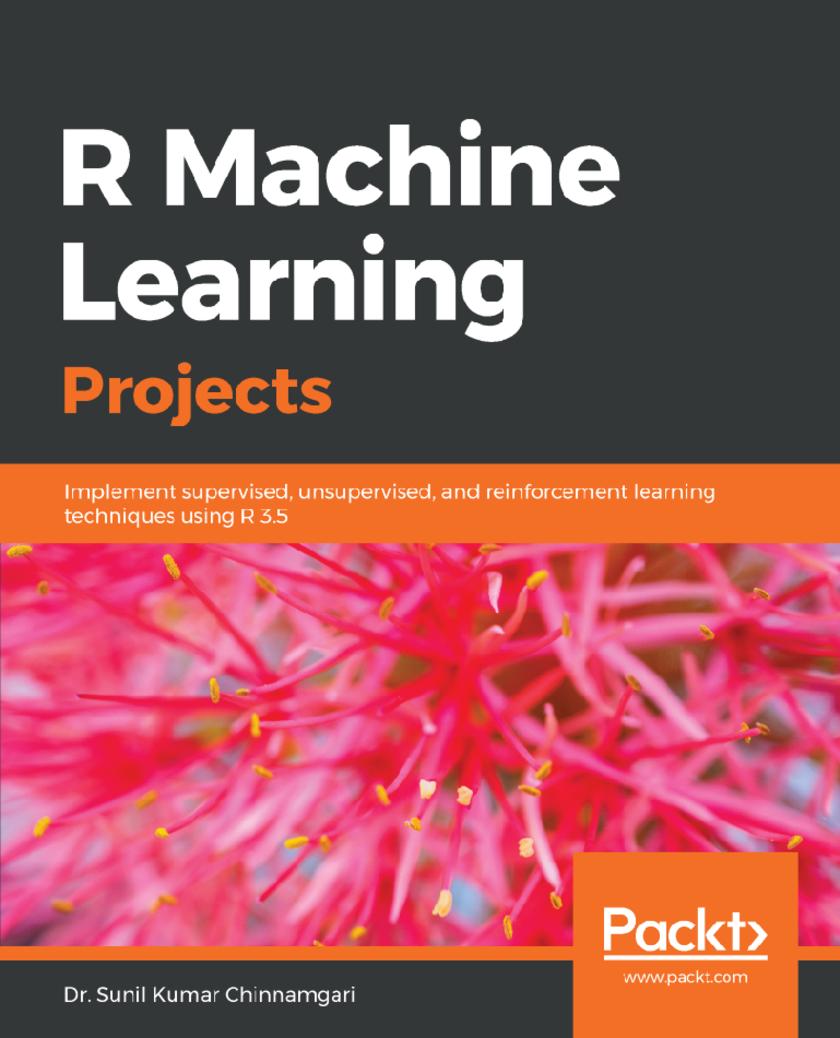
R Machine Learning Projects
¥71.93
Master a range of machine learning domains with real-world projects using TensorFlow for R, H2O, MXNet, and more Key Features *Master machine learning, deep learning, and predictive modeling concepts in R 3.5 *Build intelligent end-to-end projects for finance, retail, social media, and a variety of domains *Implement smart cognitive models with helpful tips and best practices Book Description R is one of the most popular languages when it comes to performing computational statistics (statistical computing) easily and exploring the mathematical side of machine learning. With this book, you will leverage the R ecosystem to build efficient machine learning applications that carry out intelligent tasks within your organization. This book will help you test your knowledge and skills, guiding you on how to build easily through to complex machine learning projects. You will first learn how to build powerful machine learning models with ensembles to predict employee attrition. Next, you’ll implement a joke recommendation engine and learn how to perform sentiment analysis on Amazon reviews. You’ll also explore different clustering techniques to segment customers using wholesale data. In addition to this, the book will get you acquainted with credit card fraud detection using autoencoders, and reinforcement learning to make predictions and win on a casino slot machine. By the end of the book, you will be equipped to confidently perform complex tasks to build research and commercial projects for automated operations. What you will learn *Explore deep neural networks and various frameworks that can be used in R *Develop a joke recommendation engine to recommend jokes that match users’ tastes *Create powerful ML models with ensembles to predict employee attrition *Build autoencoders for credit card fraud detection *Work with image recognition and convolutional neural networks *Make predictions for casino slot machine using reinforcement learning *Implement NLP techniques for sentiment analysis and customer segmentation Who this book is for If you’re a data analyst, data scientist, or machine learning developer who wants to master machine learning concepts using R by building real-world projects, this is the book for you. Each project will help you test your skills in implementing machine learning algorithms and techniques. A basic understanding of machine learning and working knowledge of R programming is necessary to get the most out of this book.
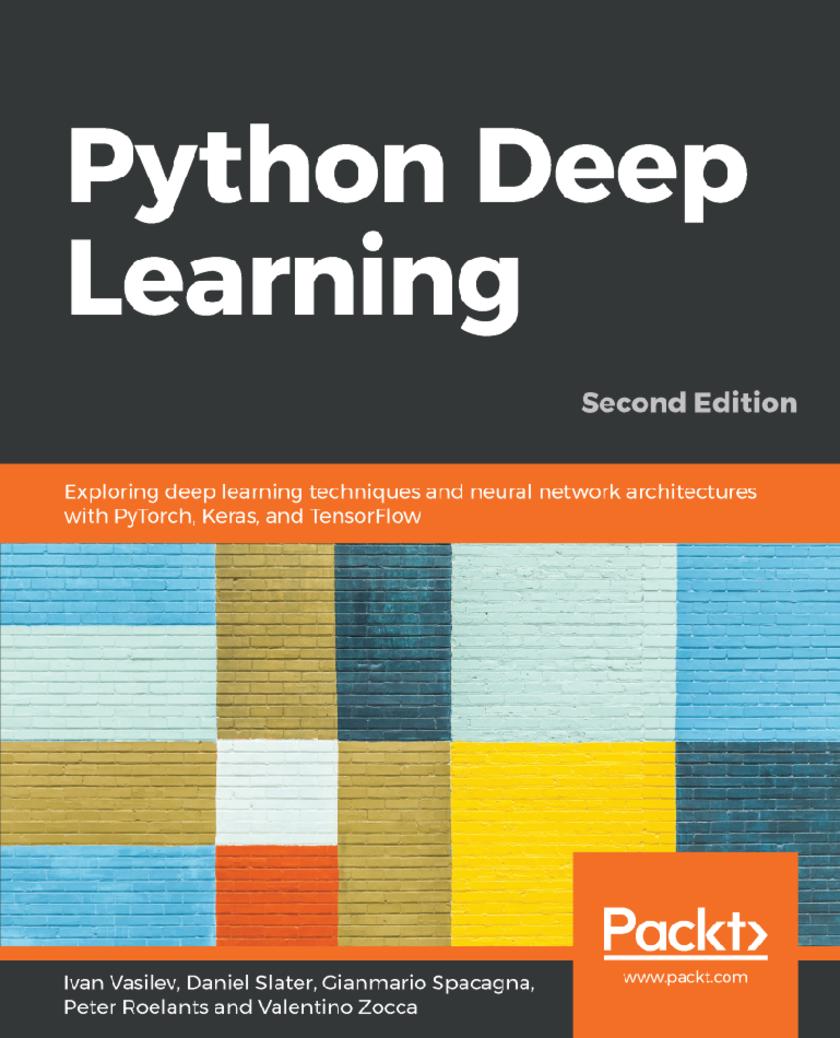
Python Deep Learning
¥71.93
Learn advanced state-of-the-art deep learning techniques and their applications using popular Python libraries Key Features *Build a strong foundation in neural networks and deep learning with Python libraries *Explore advanced deep learning techniques and their applications across computer vision and NLP *Learn how a computer can navigate in complex environments with reinforcement learning Book Description With the surge in artificial intelligence in applications catering to both business and consumer needs, deep learning is more important than ever for meeting current and future market demands. With this book, you’ll explore deep learning, and learn how to put machine learning to use in your projects. This second edition of Python Deep Learning will get you up to speed with deep learning, deep neural networks, and how to train them with high-performance algorithms and popular Python frameworks. You’ll uncover different neural network architectures, such as convolutional networks, recurrent neural networks, long short-term memory (LSTM) networks, and capsule networks. You’ll also learn how to solve problems in the fields of computer vision, natural language processing (NLP), and speech recognition. You'll study generative model approaches such as variational autoencoders and Generative Adversarial Networks (GANs) to generate images. As you delve into newly evolved areas of reinforcement learning, you’ll gain an understanding of state-of-the-art algorithms that are the main components behind popular games Go, Atari, and Dota. By the end of the book, you will be well-versed with the theory of deep learning along with its real-world applications. What you will learn *Grasp the mathematical theory behind neural networks and deep learning processes *Investigate and resolve computer vision challenges using convolutional networks and capsule networks *Solve generative tasks using variational autoencoders and Generative Adversarial Networks *Implement complex NLP tasks using recurrent networks (LSTM and GRU) and attention models *Explore reinforcement learning and understand how agents behave in a complex environment *Get up to date with applications of deep learning in autonomous vehicles Who this book is for This book is for data science practitioners, machine learning engineers, and those interested in deep learning who have a basic foundation in machine learning and some Python programming experience. A background in mathematics and conceptual understanding of calculus and statistics will help you gain maximum benefit from this book.
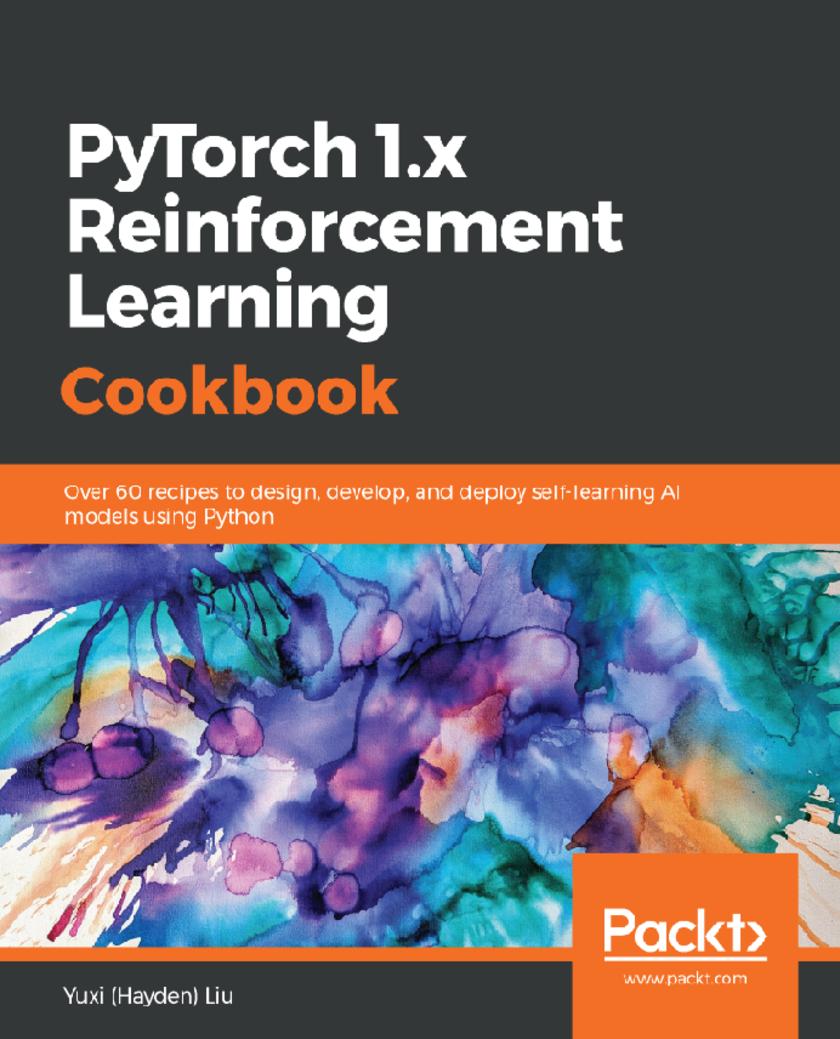
PyTorch 1.x Reinforcement Learning Cookbook
¥71.93
Implement reinforcement learning techniques and algorithms with the help of real-world examples and recipes Key Features * Use PyTorch 1.x to design and build self-learning artificial intelligence (AI) models * Implement RL algorithms to solve control and optimization challenges faced by data scientists today * Apply modern RL libraries to simulate a controlled environment for your projects Book Description Reinforcement learning (RL) is a branch of machine learning that has gained popularity in recent times. It allows you to train AI models that learn from their own actions and optimize their behavior. PyTorch has also emerged as the preferred tool for training RL models because of its efficiency and ease of use. With this book, you'll explore the important RL concepts and the implementation of algorithms in PyTorch 1.x. The recipes in the book, along with real-world examples, will help you master various RL techniques, such as dynamic programming, Monte Carlo simulations, temporal difference, and Q-learning. You'll also gain insights into industry-specific applications of these techniques. Later chapters will guide you through solving problems such as the multi-armed bandit problem and the cartpole problem using the multi-armed bandit algorithm and function approximation. You'll also learn how to use Deep Q-Networks to complete Atari games, along with how to effectively implement policy gradients. Finally, you'll discover how RL techniques are applied to Blackjack, Gridworld environments, internet advertising, and the Flappy Bird game. By the end of this book, you'll have developed the skills you need to implement popular RL algorithms and use RL techniques to solve real-world problems. What you will learn * Use Q-learning and the state–action–reward–state–action (SARSA) algorithm to solve various Gridworld problems * Develop a multi-armed bandit algorithm to optimize display advertising * Scale up learning and control processes using Deep Q-Networks * Simulate Markov Decision Processes, OpenAI Gym environments, and other common control problems * Select and build RL models, evaluate their performance, and optimize and deploy them * Use policy gradient methods to solve continuous RL problems Who this book is for Machine learning engineers, data scientists and AI researchers looking for quick solutions to different reinforcement learning problems will find this book useful. Although prior knowledge of machine learning concepts is required, experience with PyTorch will be useful but not necessary.




 购物车
购物车 个人中心
个人中心



